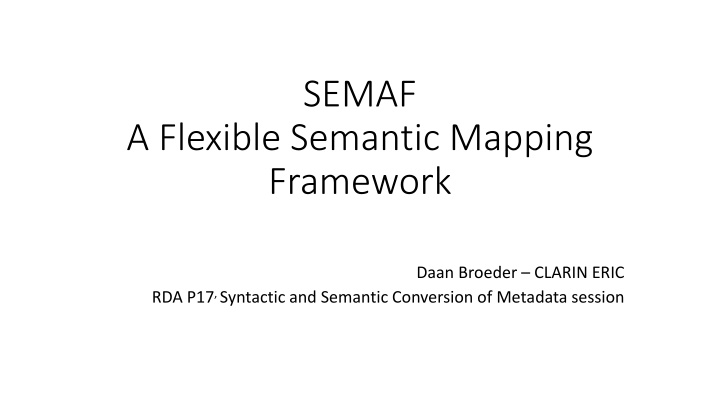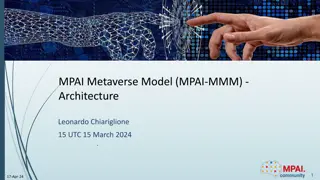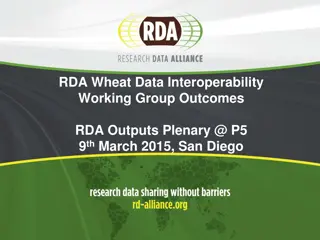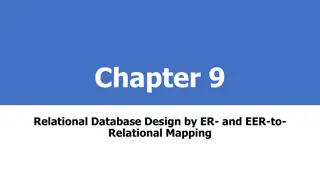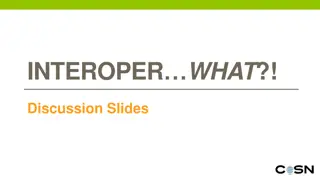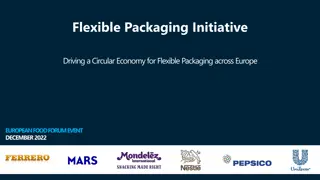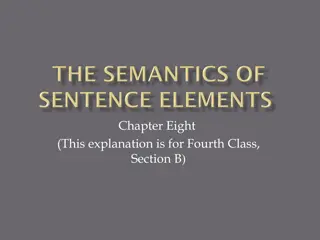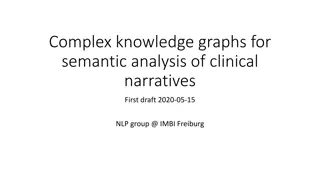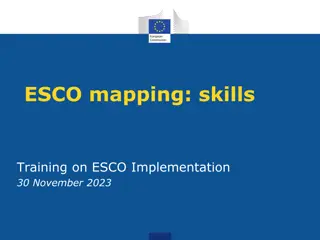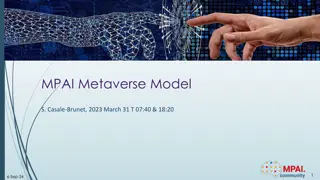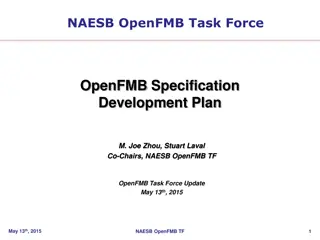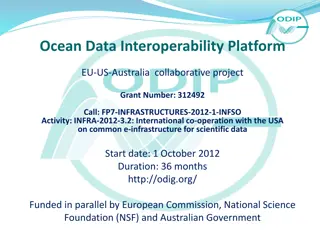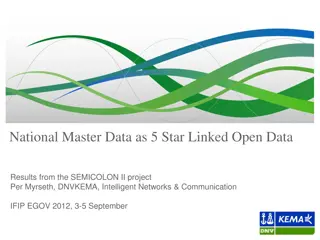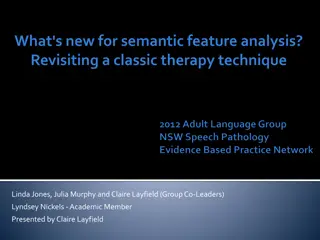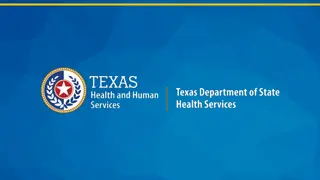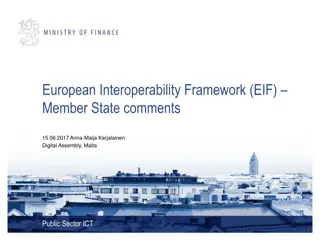Flexible Semantic Mapping Framework for Improved Semantic Interoperability
This framework Proposal aims to enhance semantic interoperability by introducing a pragmatic and flexible approach to semantic mapping. It addresses current fragmented practices, offering tools for end-users to create, reuse, and extend mappings. With a focus on FAIR principles, the framework also emphasizes proper metadata and provenance tracking. Recommendations include integrating existing technologies and standards to support mapping recipes, XSLT, X3ML, and RDF.
Download Presentation

Please find below an Image/Link to download the presentation.
The content on the website is provided AS IS for your information and personal use only. It may not be sold, licensed, or shared on other websites without obtaining consent from the author.If you encounter any issues during the download, it is possible that the publisher has removed the file from their server.
You are allowed to download the files provided on this website for personal or commercial use, subject to the condition that they are used lawfully. All files are the property of their respective owners.
The content on the website is provided AS IS for your information and personal use only. It may not be sold, licensed, or shared on other websites without obtaining consent from the author.
E N D
Presentation Transcript
SEMAF A Flexible Semantic Mapping Framework Daan Broeder CLARIN ERIC RDA P17, Syntactic and Semantic Conversion of Metadata session
SEMAF An EOSC co-creation project Collaboration Group European Data Experts (GEDE) and CLARIN ERIC to address inter- and cross-discipline semantic interoperability Goal to formulate a Proposal for a pragmatic flexible Semantic Mapping Framework SEMAF expert task-force conducted 25 interviews with community experts SEMAF final report delivered March 31 2021 proposes a 3-year follow-up project Broeder, Daan, Budroni, Paolo, Degl'Innocenti, Emiliano, Le Franc, Yann, Hugo, Wim, Jeffery, Keith, Wiland, Claus, Wittenburg, Peter, Zw lf, Carlo Maria. (2021, March 31). SEMAF: A Proposal for a Flexible Semantic Mapping Framework (Version 1.0). Zenodo. http://doi.org/10.5281/zenodo.4651421 2
Essential SEMAF Goals Current semantic mapping practices are fragmented and insufficiently documented SEMAF to register and host semantic mappings with proper metadata and provenance in FAIR SEMAF registries SEMAF to offer easy-to-use GUI tools for end-users to create new mappings and reuse and extend existing ones SEMAF is pragmatic: Targeted at specific interoperability goals SEMAF is flexible: Integrate also existing semantic components and make them FAIR don t force specific technologies but recommend SEMAF to be integrated in EOSC for governance and sustainability 3
SEMAF Semantic Mappings Registry Registry with proper metadata and provenance considered already very useful Registry to be inclusive and support registering external hosted mappings Added value of SEMAF hosting should be better provenance tracking and uniform accessibility management Potentially several such SEMAF Registries (federation) externally hosted mapping mapping mappings SEMAF Registry externally hosted hosted externally SEMAF mapping tools SEMAF hosted mappings mappings mappings SEMAF hosted hosted SEMAF Community mapping tools 4
Some Requirements & Recommendations SEMAF registries and mappings to be FAIR Be inclusive wrt already existing recommendations, components and technologies ie. adopt rather than invent. Technologies and standards to support: Human readable mapping recipes, XSLT, X3ML, RDF Well described APIs allowing integration of community tools Some easy to use SEMAF tools creating mappings to solve the problems at hand 5
Thank you! Please see the SEMAF final report http://doi.org/10.5281/zenodo.4651421 6
